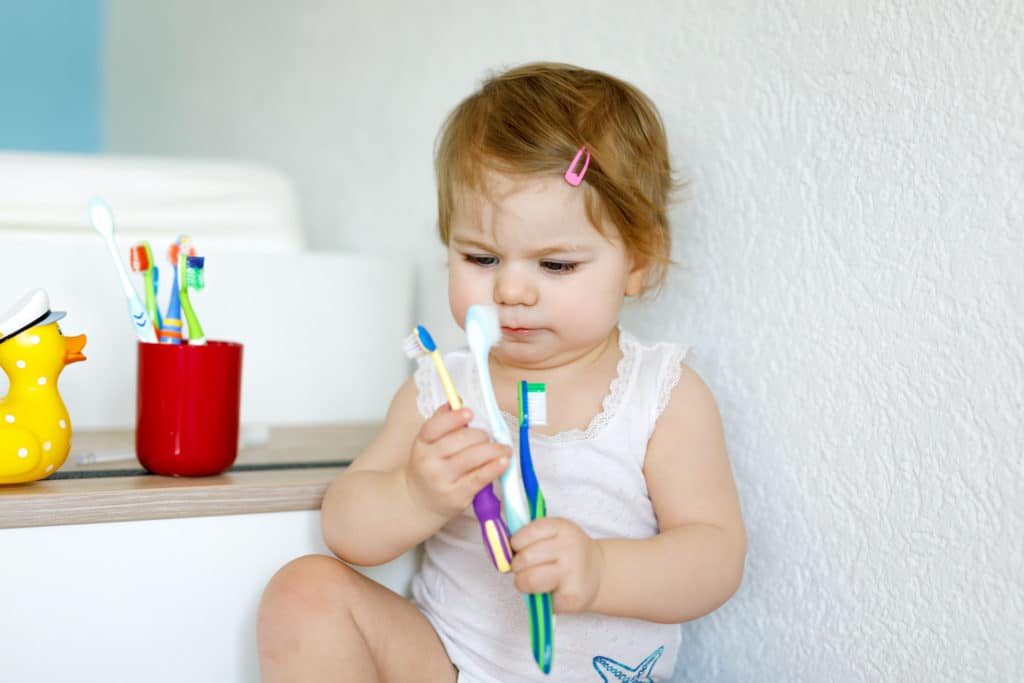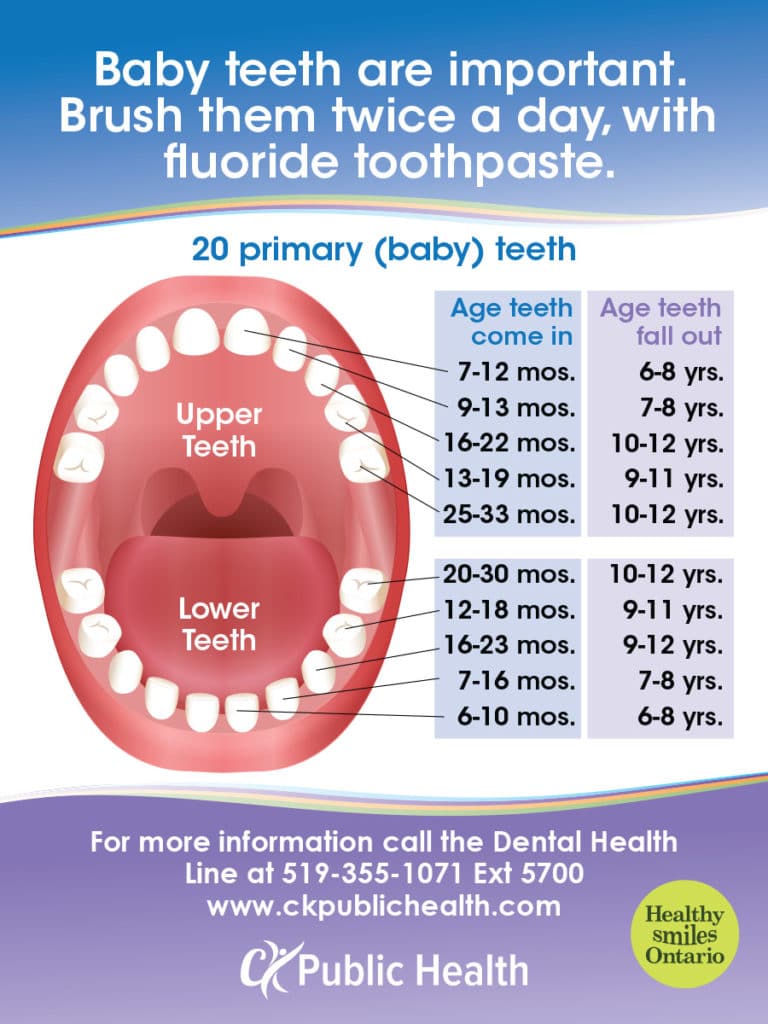 The best thing you can do for your child’s oral health is to be a good example. If you are brushing and flossing daily, your child will learn that taking care of their mouth is part of daily hygiene. But, until they are old enough, you will have to look after their oral health for them.
The best thing you can do for your child’s oral health is to be a good example. If you are brushing and flossing daily, your child will learn that taking care of their mouth is part of daily hygiene. But, until they are old enough, you will have to look after their oral health for them.
Did you know? 1 in 4 children have at least 1 cavity by the age of 4. The earlier your child sees a dental provider, the better the chances of preventing cavities. The goal is to have your child visit a dental hygienist or other oral health professional before there is a problem with his or her teeth. The Canadian Dental Association, the Canadian Pediatric Society and CK Public Health all recommend that infants be seen by a dental provider within 6 months of the eruption of the first tooth or by their first birthday. We encourage you to bring your child to CK Public Health so one of our Registered Dental Hygienists can assess your child’s oral health. If you are concerned about any white or brown spots on your child’s teeth, you can contact a provider earlier than the first birthday. Baby teeth matter!
What to expect at the first visit
- Your child will take a ride in the chair. Infants will be screened with knee to knee method.
- Your child will be given sunglasses to wear so that the dental hygienist can position the light over your child’s mouth.
- The dental hygienist will wear a mask to prevent the spread of germs.
- The dental hygienist will likely use only a mirror to examine your child’s teeth.
- The dental hygienist will provide an oral health assessment, a fluoride treatment at no cost if needed, and provide you with a FREE ORAL HEALTH KIT with child tooth brush, booklet and other items.
The first dental visit is a perfect time to discuss your child’s eating patterns with your dental hygienist. Any effects from thumb sucking or pacifier use can also be explored, and your dental hygienist will answer any questions you may have. Hopefully after this visit, your child will be comfortable with having others look in his or her mouth.
After the first dental visit, regular appointments should be scheduled at intervals recommended by your dental hygienist. These regular appointments can prevent problems from arising and ensure that emerging issues are addressed promptly.
Your family and your dental hygienist – partners in prevention.
 Teething
Teething
Your baby’s first teeth will likely appear somewhere between 4 and 7 months of age, although there is a wide range in timing. Once the teeth start coming in, you can expect them to follow the order shown in the chart below.
Teething babies may sometimes be fussy, drool more than normal, and may want to chew on something hard. Firm rubber teething rings are good choices, but avoid teething toys that you freeze as they can get too hard and do more harm than good. Medications that you rub on the gums are not advised, but rubbing or massaging the gums with your finger or with a damp soft cloth can provide some relief. If your child has a fever over 38.3 Celsius, take him or her to see your doctor. Teething does not cause high fevers.
